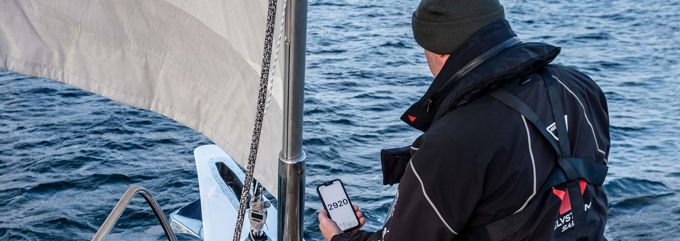Did you not find what you were looking for?


There are innumerable different combinations of materials, material strength, sail cut, size, and sail making techniques.
Finding the ideal combination requires many years of experience and comprehensive know-how. With a development experience spanning 70 years, you can rest assured that we will design the ideal sail for you.
Each design process starts with the measurement of the rig. The sail designers at Elvstrøm Sails then use the rig data to create an exact, three-dimensional computer model. This means the sail plan can be perfectly matched to the geometry of the rig without even the slightest bit of sail surface. Special attention must be paid to spreader sweep and (wind-related) factors like mast bend and luff sag (backstay tension) so precise knowledge of the different types of boats is essential.
Boat measurement
Our designers are all active sailors, fully aware of the dynamic behaviour of modern rigs and with access to our extensive database of sails and configurations for close to 10,000 boats with varying types of rigs, they have optimal possibilities of designing your sail.
And through our network of Elvstrøm SailPoints, we are able to have your boat measured specifically for new sails.

Fluid Structure Interaction is a scientific simulation method to optimize the sail design and consequently the performance. The analysis is made in a comprehensive sail design solution that has been developed over years and validated by real scale experiments.
This methodology is very often used in projects within the super yacht and grand prix racing segments. For one off projects, the method is a must and essential to obtain an acceptable starting point for the sail designs and later on setting up the boat according to the desired sail shapes and target values for boat speeds and angles.
Naturally everything possible from those studies will eventually be applied to general sail development.
“At Elvstrøm Sails this is in fact an ongoing process in developing our competencies and staying at the cutting edge of modern sail design”, Jesper Bank explains.
Any structural analysis starts with a field of forces applied on the sails surface. In a simulated sailing condition with a predicted boat speed, True Wind Direction (TWD) and True Wind Speed (TWS), the characteristics of the boat and the initial sail trim, the FSI calculation delivers a vast amount of essential and critical information to obtain the most efficient flying shape of the sail.
